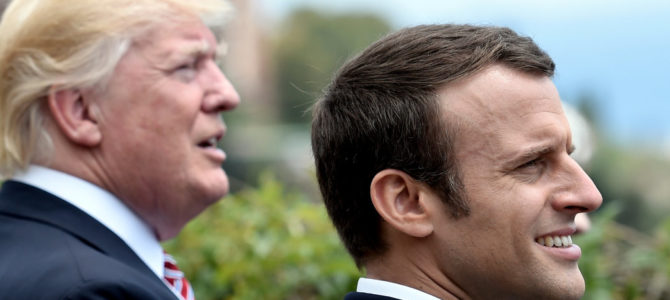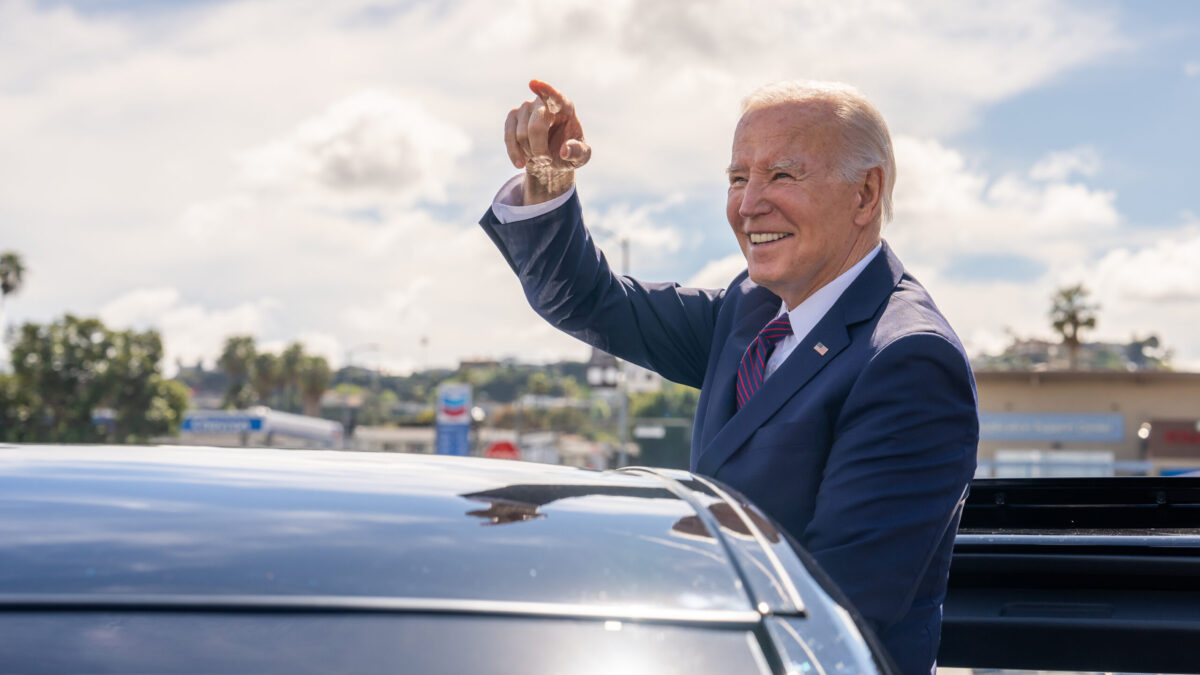
Will Rahn extends an idea he floated on our recent podcast together into a piece at CBS News.
“Centrist pundits and much of the political donor class have long dreamed about some charismatic moderate making an independent run at the White House. This fantasy has long been derided by most political observers, and for good reason, because putting aside the obvious difficulties of running outside the two party system, the “centrist” always looks decidedly unappealing to anyone outside a tiny demographic of moneyed elites. The last attempt at generating such a candidate, a well-funded scheme called Americans Elect, collapsed in 2012 despite a spate of glowing profiles in the press.
Obviously, however, our politics have gotten a whole lot weirder since 2012. It can no longer be said that both parties are cut from the same essential ideological cloth, and that it doesn’t really matter if voters choose Kang or Kodos to lead them. The vision of America offered by Donald Trump on one side and Bernie Sanders on the other are indeed starkly different.
A few months ago, a well-known political scientist put it to me this way: America had JV politics, with the two parties mostly in agreement about the major issues of the day, while Europe had varsity politics, with the major parties giving voters real choices between capitalism and socialism and how their countries would operate in the global order. That dynamic is now flipped, he said, with the major European countries working together against radicalism, while over here the GOP and the Democrats adhere more and more to the vastly different wishes of their respective bases.
It seems reasonable to expect, then, that at some point soon a real vacuum will emerge at the center of American politics where there wasn’t one before. Trump will run on a record of trying to weaken the social safety net, albeit with a lot of symbolic populism, insult comedy, and a tendency toward retreating from the world stage thrown in. The Democratic nominee will respond with promises of massive new government programs, a renewed emphasis on the needs of marginalized and sometimes miniscule groups, and a colossal tax bill to prepare the way for a new, fairer America. Maybe, just maybe, we’ll come to see there’s quite a bit of room between those poles.”
Rahn floats the idea of Mike Bloomberg, Joe Scarborough, John Kasich, Howard Schultz, Mark Zuckerberg, Oprah Winfrey, Dwayne Johnson, and Sheryl Sandberg as potential candidates who could fulfill such a Macron-like positioning in American politics. But he acknowledges the challenge here: “Figuring out a winning centrist platform would be difficult, and running without a party infrastructure would be an enormous challenge. The two-party system is, after all, as old as the republic itself. The wrong candidate with the wrong message would quickly turn into John Anderson 2.0.”
The problems are even more daunting than that, from my perspective. While it’s of course tempting to envision an attempted Zuckerberg or Johnson run, the two party system is so ingrained in the American system that a Macron-like rise almost requires one party to collapse and be replaced or supplanted. For all the negative effects Donald Trump might have on Republican electoral chances in the midterms, The Resistance has yet to notch a single electoral victory of the kind that would indicate a 2018 collapse for the GOP. There are simply not enough voters in the country willing to ditch tribal loyalties if the fault lines between the tribes are so great.
Consider the third party candidates who have had the most success in America historically – let’s just take the past century. Teddy Roosevelt was by far the most successful of the third party candidates, taking nearly a third of the popular vote and surpassing incumbent President Taft. Ross Perot was the second most successful, taking more than 18 percent of the vote in 1992. And George Wallace was the third most successful, garnering 13 percent of the vote in 1968 and being the only third party candidate in the past 69 years to win a state.
The problem here is that the infrastructure and loyalties of party officials and their voters is simply to ingrained in American life to see a path forward for a third party presidential candidate absent the utter collapse of one of the existing parties. Parties do die, of course, but they are more often than not replaced by new coalitions that supplant the preexisting ones, while retaining the same national name. Incumbent presidents are nearly impossible to unseat for the nominations of their party – though I would like to see John Kasich and Joe Scarborough give it a try, if only for the hilarity of it.
Thus, the only realistic path for a Macron-like candidate would be to win the nomination of the Democratic Party. This is totally logical as a path back to the White House for the Democrats – seizing hold of the voters who reluctantly went for Hillary with a charismatic figure who can give a populist tinge to technocratic globalism – but given the energy and vibrancy of the illiberal populists of the left at the moment, such a task seems at this juncture to be utterly impossible. Consider what’s going on in California, where the rejection of a fracking ban, debt-free college, and single-payer health care by Democrats who actually care about budgeting has plunged the party into ‘civil war’. Imagine that on a national scale.
Perhaps this will change. But it is hard to see how it possibly could that quickly. The problem for those within the mainstream of American politics is that it isn’t.








